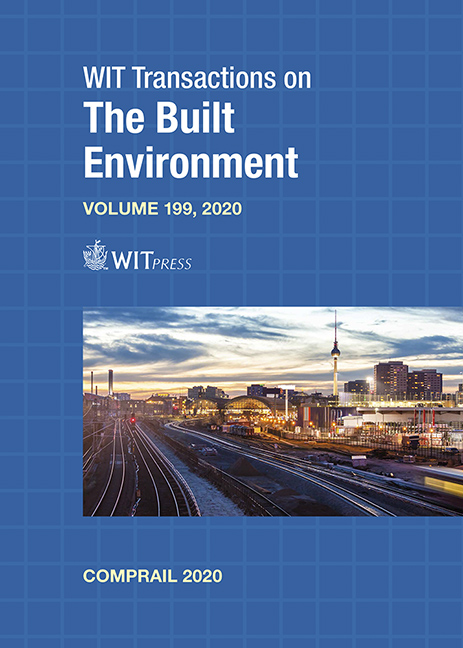NEW APPROACH FOR MISSING CONSUMPTION RECONSTRUCTION AND VALIDATION OF ENERGY METER DATA
Price
Free (open access)
Transaction
Volume
199
Pages
8
Page Range
227 - 234
Published
2020
Paper DOI
10.2495/CR200211
Copyright
WIT Press
Author(s)
LUIS MARIA ALONSO, AURELIEN WATARE, LAURENT-DIDIER ROUX, LIONEL TAUNAY, CHRISTOPHE SAUDEMONT, BENOÎT ROBYNS
Abstract
The opening of the railway use all around Europe carried plenty of technical challenges never seen before in the railway field. An important challenge in energy billing filed, is to precisely do the billing of the consumed energy for each railway company in a reliable way. For that, in ground applications, RTE (the French national transmission system operator, who is in charge of the energy metering in railways by law in France) normally installs two energy meters to ensure the reliability of the measurements. Nevertheless, in agreement with the European law, the installation of only one energy meter is mandatory in the new/refurbished rolling stock since 2014. To ensure the correct billing of the railway companies, the data collected by the energy meters must be validated. In other cases no measure is available due to different technical problems, therefore a system that estimates the energy consumptions of those journeys is necessary. In this paper, a validated dataset is used to reconstruct the amount of energy consumed by trains whose energy meter data is missing or not valid. The validated data will be the start point for different estimators of the consumed energy by the trains. This dataset is composed of the information collected from the energy meters (date information and GPS position of the train) and train run data (transit times on fixed points of the line). Different types of estimators for the energy reconstruction are compared with real measurement data from a regional train circulation for a couple of years. Finally, a discussion of the performance of the different estimators will be shown.
Keywords
energy billing, consumption estimation, neural networks, measurement reliability





